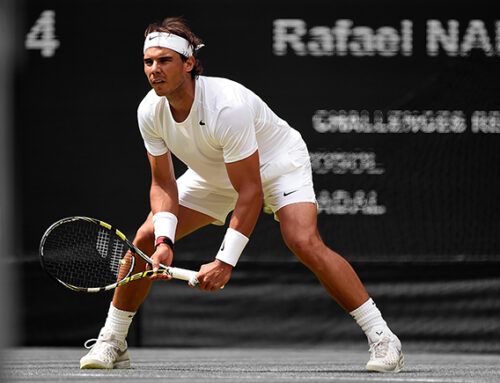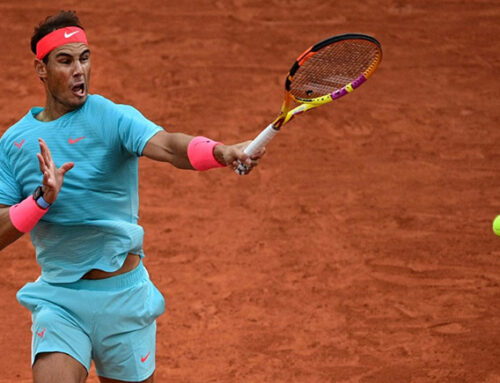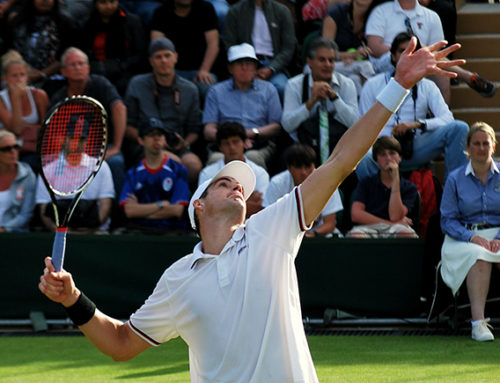In 1985, one year after turning professional, Boris Becker won Wimbledon at age 17. Four years later, Michael Chang would win the French Open at the same age (albeit a few days younger). Mats Wilander netted his maiden grand slam title also at 17, whereas Bjorn Borg didn’t get his until 18 years of age. Edberg was 19. The list of youthful grand slam winners is long. Moreover these same players were not just grand slam winners, but long-standing players who reached the pinnacle of the game at a young age and stayed there for a long time. It is startling therefore to realize that at the time of writing there is not a single player under the age of 20 in the top 100 men’s singles players in the world. Ironically we have Stepanek at age 34, Llodra will turn 33 this year, and Federer sits at #2 in the rankings closing in on his 32nd birthday. The days of teenagers in the top 10 has gone – conversation of the ‘next generation’ of players in the wake of the big 4 centers around a group of 20-24 year olds – only one of whom is currently ranked in the top 20. All of this begs the question: where have all the prodigies gone?
Depth Of Field
The first and easiest answer is the depth of the field in men’s tennis. The professional tennis tour is significantly more competitive than it was 20 or 30 years ago (even given the dominance in grand slams by four men). As tennis has become more global and the riches of professional success in it grown, the number of people vying for a spot in the professional ranks has grown significantly. As a result, the depth of field has grown – the players ranked 500 today are much stronger than the 500 ranked player was in 1985 when Becker had his breakthrough.
Psychological Skills Are Paramount
There is a saying: with a billion people in the world, if you’re one in a million it just means there is a thousand others like you. Nowhere is this more true than in modern tennis. 130 mph serve? Join the back of the line over there. You’ve got a big forehand? So does that fourteen year old boy at the local academy. The differences amongst the field have narrowed considerably over the years even as the ‘Big 4’ have seemingly elevated themselves above all others. Less and less do we see a drop in quality of technique or fitness as we go lower in the rankings – instead it has become far more about tactics, focus, match management. When everyone is fit, strong with competent technique, psychological skills become paramount. And is it so happens, those are the skills that typically take longer to master. You can’t give a seventeen year old the experience of seven years of playing professional tennis without him going out and actually doing it. The margins are so small, and it takes time for a player to ‘figure it all out’.
The Game Has Become More Physical
The increased physicality of the game is a huge factor in the disappearance of teenagers at its peak. It is not enough just to be ‘fit’ – players must hit with incredible power on the run. They must put out extreme levels of exertion for short bursts with short recovery, and do so over and over again for up to 5 hours. Players must be fleet of foot, agile, explosive, strong and have endurance. Training for this is extremely difficult. And training is cumulative. Any good strength and conditioning coach will plan for his charge to build on their previous work. In order to better explain, let’s take a look at a budding professional tennis player…
In order to prevent potential growth issues, true weight training doesn’t begin until mid-teens at the earliest. Even upon beginning strength training, the body is still growing and maturing. At nineteen a player can’t match what his strength and power will be when he is twenty three. At twenty-three has a player reached his physical peak? Andy Murray would beg to differ. As a player masters certain physical skills, those get built upon. Front squat can lead to cleans, and jerks, which can lead to snatches. Reaching a personal peak with a dead-lift simply means a stronger base to begin the next training cycle with. Every month builds upon the last – each year builds upon the last. It takes years to catch up to the kind of sustained work that a player who is in his mid-to-late twenties has been doing.
So in essence, a teenager simply hasn’t physically matured enough, nor obtained sufficient training build-up to match a player in his mid twenties. And at the grand slams we aren’t simply asking him to do this once, but potentially seven times. The only way for a teenager to genuinely compete with the strength, power and endurance of a man in his prime is to be so prodigiously talented that the physical aspect becomes almost moot.
Conclusion
The days of teenage grand-slam winners is over. Nadal won his first French Open at age 19, and will likely be the last man to win a slam before the age of 20. We may see an occasionally very strong performance from a younger player in a single tournament – a la del Potro at the 2009 US Open – but don’t expect to see any eighteen year olds holding down a place in the top 10 any time soon. Too many factors weigh against them when it comes to sustaining performance against older, more wizened opponents for extended periods.


